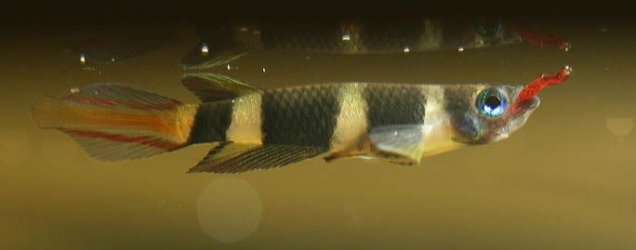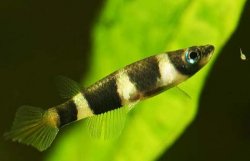Hi,
After being given a Golden Wonder Panchax a few months ago I have since bought 3 more. ( I believe I now have 3 females and 1 big male) I have also bought 3 Clown Killifish (about 1" long at present - unsure of sexes)
My Golden Wonders are in a community tank with Praecox Rainbows, a pair of Gold Rams and some small loaches. The Clowns are in a different community tank with Sparkling Gourami, Khuli Loach and several small catfish.
They all get fed a mixture of flake and frozen foods regularly and the Golden Wonders are amazingly tame - they will swim onto my hands for food.
So, does anyone have any advice on either of these species? EG: Life span, adult size, any special requirements other than spawning mops for breeding?
I already have soft, acidic water that is tanin stained from my bogwood.
Thanks in advance!
After being given a Golden Wonder Panchax a few months ago I have since bought 3 more. ( I believe I now have 3 females and 1 big male) I have also bought 3 Clown Killifish (about 1" long at present - unsure of sexes)
My Golden Wonders are in a community tank with Praecox Rainbows, a pair of Gold Rams and some small loaches. The Clowns are in a different community tank with Sparkling Gourami, Khuli Loach and several small catfish.
They all get fed a mixture of flake and frozen foods regularly and the Golden Wonders are amazingly tame - they will swim onto my hands for food.
So, does anyone have any advice on either of these species? EG: Life span, adult size, any special requirements other than spawning mops for breeding?
I already have soft, acidic water that is tanin stained from my bogwood.
Thanks in advance!


 /www.aquarticles.com/articles/breedi...awning_Mop.html
/www.aquarticles.com/articles/breedi...awning_Mop.html
